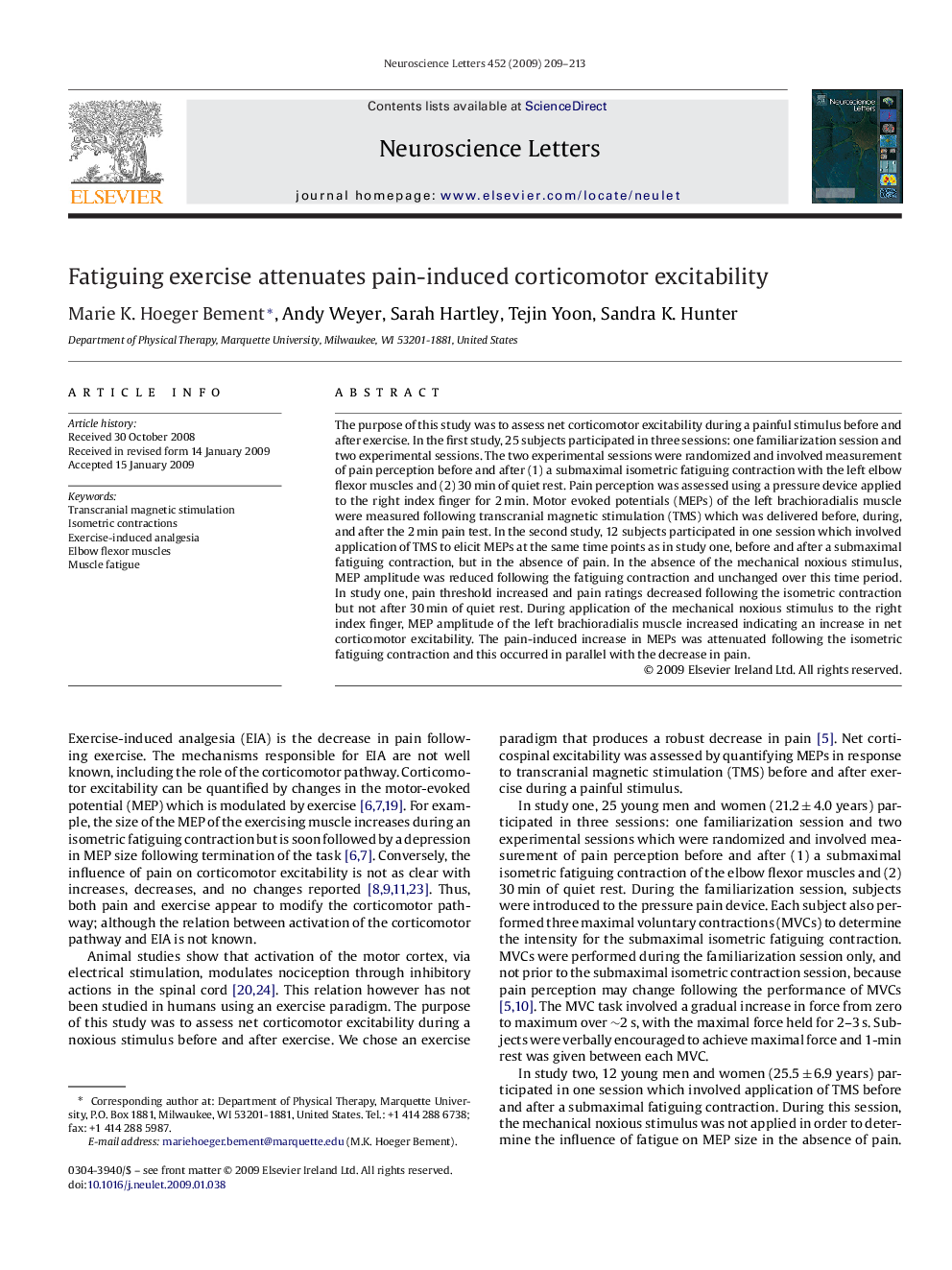| Article ID | Journal | Published Year | Pages | File Type |
|---|---|---|---|---|
| 6285593 | Neuroscience Letters | 2009 | 5 Pages |
Abstract
The purpose of this study was to assess net corticomotor excitability during a painful stimulus before and after exercise. In the first study, 25 subjects participated in three sessions: one familiarization session and two experimental sessions. The two experimental sessions were randomized and involved measurement of pain perception before and after (1) a submaximal isometric fatiguing contraction with the left elbow flexor muscles and (2) 30Â min of quiet rest. Pain perception was assessed using a pressure device applied to the right index finger for 2Â min. Motor evoked potentials (MEPs) of the left brachioradialis muscle were measured following transcranial magnetic stimulation (TMS) which was delivered before, during, and after the 2Â min pain test. In the second study, 12 subjects participated in one session which involved application of TMS to elicit MEPs at the same time points as in study one, before and after a submaximal fatiguing contraction, but in the absence of pain. In the absence of the mechanical noxious stimulus, MEP amplitude was reduced following the fatiguing contraction and unchanged over this time period. In study one, pain threshold increased and pain ratings decreased following the isometric contraction but not after 30Â min of quiet rest. During application of the mechanical noxious stimulus to the right index finger, MEP amplitude of the left brachioradialis muscle increased indicating an increase in net corticomotor excitability. The pain-induced increase in MEPs was attenuated following the isometric fatiguing contraction and this occurred in parallel with the decrease in pain.
Related Topics
Life Sciences
Neuroscience
Neuroscience (General)
Authors
Marie K. Hoeger Bement, Andy Weyer, Sarah Hartley, Tejin Yoon, Sandra K. Hunter,
